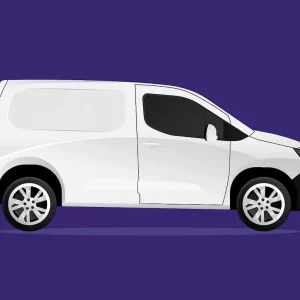Words like iconic and legendary are banded around all too frequently in modern parlance, but in commercial vehicle terms they are almost underselling the stature and influence of the Ford Transit.
In a rare instance of advertising being a fair representation of product, Ford branded its Transit the “Backbone of Britain”, and looking at the number of Transits Ford has put on the road, it’s hard to argue. Look along any motorway, town or street, and it’s rarely more than a few seconds before another one pops into view.
We’re honouring the Transit is its 50th year at the top of the UK light commercial vehicle sales chart – a position it grabbed pretty much as soon as the first vehicle rolled off the Langley production line in Berkshire in August 1965, costing from £542 and offering a 610kg-1782kg payload. Power came from a choice of 74hp 1.7 or 86hp 2.0 petrol engines. Since then, a Transit has been bought every 180 seconds, which means getting on for 9m vehicles worldwide, nearly 28% of which were in the UK.
But it’s not just about the numbers. This is a vehicle intertwined with British history, from the Metropolitan Police describing it as “Britain’s most wanted van” in 1972 after claiming a Transit was used in 95% of bank raids to the Supervan MKI, II and III, fitted with various racing engines and culminating in the 650hp Formula One-engined Supervan III. Supervan II even set a 170mph world caravan towing record.
Though the success of the Transit branding has seen it employed on Ford’s full range of four panel vans, it’s still only the large 2t Transit that bears it in isolation, rather than it smaller Transit Custom, Transit Connect and Transit Courier siblings. The big van is also now sold in the United States, with the first models rolling off the Kansas City production line last year.
Over the last 50 years, there have been a huge number of developments to get to the point we are at now, with over 450 variants offered across van. chassis cab and minibus, as well as front-, rear- or all-wheel drive and power outputs of 100hp, 125hp and 155hp. That’s a step up from the first diesels of 55hp and 62hp, added to the range in 1972.
It took 11 years to get to the first million vehicles, by which time the Transit had become the first medium commercial vehicle to feature front disc brakes, fitted to the new 3.5t Transit 190 added to the range.
The second generation of Transit arrived in 1978, and with it came its first automatic gearbox, and the second generation vehicle took the brand past the point of 2m being built in 1985.
Generation three arrived the following year, with its aerodynamic design cutting fuel consumption and improving crash protection, while in 1991 the first turbodiesel was launched in the form of
the 100hp 2.5 DI.
The third million was passed in 1994, and the four million mark coincided with the fourth generation Transit launching in 2000. Built in Belgium, it was the first light commercial offered with front- and rear-wheel drive configurations on the same platform. Production moved to its current location of Kocaeli in Turkey in 2004, a year before the five million production total was reached, with the latest million taking just four years to achieve.
All-wheel drive joined the range in 2007, making all three configurations available on the same chassis, and the vehicle’s 45th anniversary was celebrated by it hitting a total production of 6m in 2010. Three years later it was past 7m on the way to the current generation model, which saw a split between the medium and large vans. The medium van range in the one-tonne segment was branded Transit Custom with the launch of the new van in 2012, and in 2014 the all-new ‘big’ Transit became the fifth generation of vehicle to bear the name.
It’s come a long way in that time, and there aren’t many people in the UK that are untouched by the icon of the British LCV market on a daily basis. Half a century of unbridled and peerless success make the Transit a worthy addition to the What Van? Hall of Fame.





